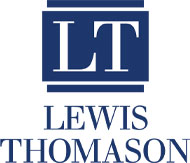Tennessee Supreme Court holds economic loss doctrine does not bar jury’s $3.9M punitive damages award in contractor-subcontractor dispute.
In Commercial Painting Co. v. Weitz Co. LLC, 676 S.W.3d 527 (Tenn. Sept. 27, 2023), the Tennessee Supreme Court considered whether the economic loss doctrine applied to claims other than products liability. The economic loss doctrine traditionally precludes recovery in tort for purely economic losses arising from a breach of contract.
Background
The dispute arose between The Weitz Company, a general contractor, and Commercial Painting Incorporated, Weitz’s drywall subcontractor. Weitz hired Commercial Painting in December of 2004 to perform drywall work on a retirement community in Shelby County, for which Weitz was the general contractor. The parties initially agreed that Commercial Painting would be paid $3,222,400 for their work. The amount later increased to $3,315,189, and several related disputes arose throughout the contract’s performance.
Commercial Painting sued Weitz in Shelby County Chancery Court in August 2006 after Weitz refused to make the final five payments. Weitz argued that the payment applications were not timely submitted and contained improper change order requests. Commercial Painting sued Weitz, its insurance companies—Federal Insurance Company and St. Paul Fire and Marine Insurance Company—and The Village at Germantown in Shelby County seeking $1,929,428.74 in damages for breach of contract plus attorney’s fees. Commercial Painting claimed that Weitz failed to coordinate the project, which caused inefficiencies and forced Commercial Painting to do extra work. In their complaint, Commercial Painting also made claims for payment for interest on retainage, unjust enrichment, enforcement of Commercial Painting’s lien, plus interest and attorney’s fees under the Prompt Payment Act against Weitz’s sureties.
Weitz counterclaimed against Commercial Painting and its surety, asserting damages were caused at least in part by Commercial Painting’s delay and defective workmanship. Commercial Painting later amended their original complaint to add claims for fraud, intentional and negligent misrepresentation, recission/reformation of the contract and sought punitive damages. Commercial Painting contended that Weitz had negotiated a six-month extension with the project owner and intentionally failed to disclose the extension and made misrepresentations about the schedule to Commercial Painting before executing the contract, knowing that it would postpone the timeframe when Commercial Painting would need to perform. Weitz generally denied these allegations and maintained that Commercial Painting was partially responsible for the delays.
The Trial Court granted summary judgment for Weitz on Commercial Painting’s misrepresentation, fraud, reformation/recission, and punitive damages claims. After a bench trial, the court awarded Commercial Painting $450,464.26 for breach of contract after subtracting $150,000 for Weitz’s supplementation of Commercial Painting’s work. The Court of Appeals vacated the Trial Court’s grant of summary judgment and remanded to the Trial Court, stating that there was a genuine issue of material fact regarding Commercial Painting’s intentional and negligent misrepresentation claims.
Back in the Trial Court, the jury found in favor of Commercial Painting, awarding damages in the amount of $1,729,122.46 on Commercial Painting’s breach of contract, unjust enrichment/quantum meruit, intentional misrepresentation, and payment bond claims. The jury also found Weitz liable for $3,900,000 in punitive damages. Ultimately, damages totaled $8,359,863.83, including interest and attorney’s fees.
Weitz appealed to the Court of Appeals, which held that the economic loss doctrine “precludes contracting parties from pursuing tort recovery for purely economic or commercial losses associated with the contract relationship” and applied when the contract was negotiated between sophisticated parties. As previously discussed in this blog, the Court of Appeals found the economic loss doctrine indeed applied outside the products liability realm, to which its application had previously been limited. The Court affirmed the award of compensatory damages for breach of contract but dismissed the misrepresentation claim and the related punitive damages award, reversed the pre- and post-judgment interest award, and reversed the award of attorney’s fees for all costs associated with claims for any damages other than compensatory damages.
Supreme Court Holding
However, the Tennessee Supreme Court ultimately rejected the Court of Appeal’s expanded application of the economic loss doctrine. The Supreme Court limited the economic loss doctrine’s application to products liability cases and found the doctrine should not be extended to other claims, such as those involving service contracts. The upshot is that parties aggrieved by a breach of contract may be able to recover “tort” damages, even if the contract limits recovery of such damages, though the law remains unsettled on this issue.
The Supreme Court discussed its recent decision in Milan Supply Chain Sols., Inc. v. Navistar, Inc., a products liability case in which the Court adopted a narrow exception where fraud claims are barred where related to contractual misrepresentations and nondisclosures about the “quality, reliability, and character of goods that are the subject of a contract between sophisticated business entities.” However, the Court noted the doctrine was confusing, and the Court did not contemplate expanding the doctrine outside the products liability context. The Court reasoned that applying the doctrine outside products liability would threaten parties contracting for services, who are not covered by the Uniform Commercial Code’s significant protections.
Expanding the economic loss doctrine to other types of claims would “threaten to extinguish tort claims, long recognized as legitimate and viable, for people entering into… commonplace informal contracts for services.”
Additionally, the Supreme Court reasoned that the economic loss doctrine should not preclude service contract tort recovery because safeguards existed to prevent excessive damages. The Court concluded that there are adequate existing safeguards to protect against disproportionate liability, such as foreseeability, proximate causation, and the rule against double-recovery. Thus, the Court found the extension of the economic loss doctrine beyond products liability cases unnecessary.
Accordingly, the Supreme Court reversed the Court of Appeals’ ruling regarding the applicability of the economic loss doctrine, found the doctrine does not bar Commercial Painting’s recovery of compensatory and punitive damages based on its tort claim of intentional misrepresentation against Weitz, and pretermitted the issue of attorney’s fees since Commercial Painting was the only “prevailing party” under the Supreme Court’s decision.
Dissent
Judges Campbell and Bivins dissented, arguing that the majority’s predictions regarding the potential confusion that would result from the application of the economic loss doctrine to the present scenario were exaggerated. The dissent further argues that drawing such a distinction would only require more exceptions to be made, and thus create greater confusion. Seeing no reason to distinguish contracts for goods from contracts for services, the dissent held that the economic loss doctrine should apply. The dissent noted that contracts for services are often “‘simple and informal’ and do not necessarily reflect the ‘fundamental premise’ that ‘bargaining parties will allocate the risks and remedies.’” The dissent further analyzed the adoption of the doctrine by at least thirteen other states, including some that have extended the doctrine for construction contracts.
The dissent also disagreed with the majority regarding their opinion that sufficient safeguards are in place to prevent disproportionate recovery. The dissent stated,
“[E]ven if a plaintiff is precluded from recovering overlapping damages in both contract and tort, tort damages often will far exceed contract damages. This case proves the point: Commercial Painting’s tort claim resulted in a punitive damages award of nearly $4 million—damages that would have been unavailable had Commercial Painting been limited to its contract remedies.”
Final Word?
On remand from the Supreme Court, the parties continued their twenty-year dispute. The Trial Court adopted Commercial Painting’s proposed order. Weitz disputed which issues had been pretermitted related to the punitive damages award and challenged the Court’s verbatim adoption of Commercial Painting’s proposed order. Consistent with the Supreme Court’s holding, on Oct. 1, 2024, the Court of Appeals held that the economic loss doctrine did not bar Commercial Painting’s recovery of punitive damages. The Court also held that while verbatim adoption of a party’s proposed findings of fact is improper, that did not warrant vacating judgment in this case. Vacating the order would not change the outcome, as the Trial Court’s repeated affirmed findings “expressed the judge’s own views and understanding of the facts and law of this case.”
What’s the takeaway?
Ultimately, the Tennessee Supreme Court limited the application of the economic loss doctrine to products liability cases, not precluding recovery under the economic loss doctrine for service contracts. This may present concerns for contractors, many of which are illuminated by the dissenting opinion. One such concern is that a party may be able to recover excessive damages beyond what the contract provided. Another reason is that confusion and unpredictability may arise regarding attainable recovery when another party breaches. It is thus more important than ever to consult your attorney when confronted with issues related to a construction contract, whether scheduling or otherwise.
Photo Credit: Mussi Katz licensed under CC0 1.0 UNIVERSAL





